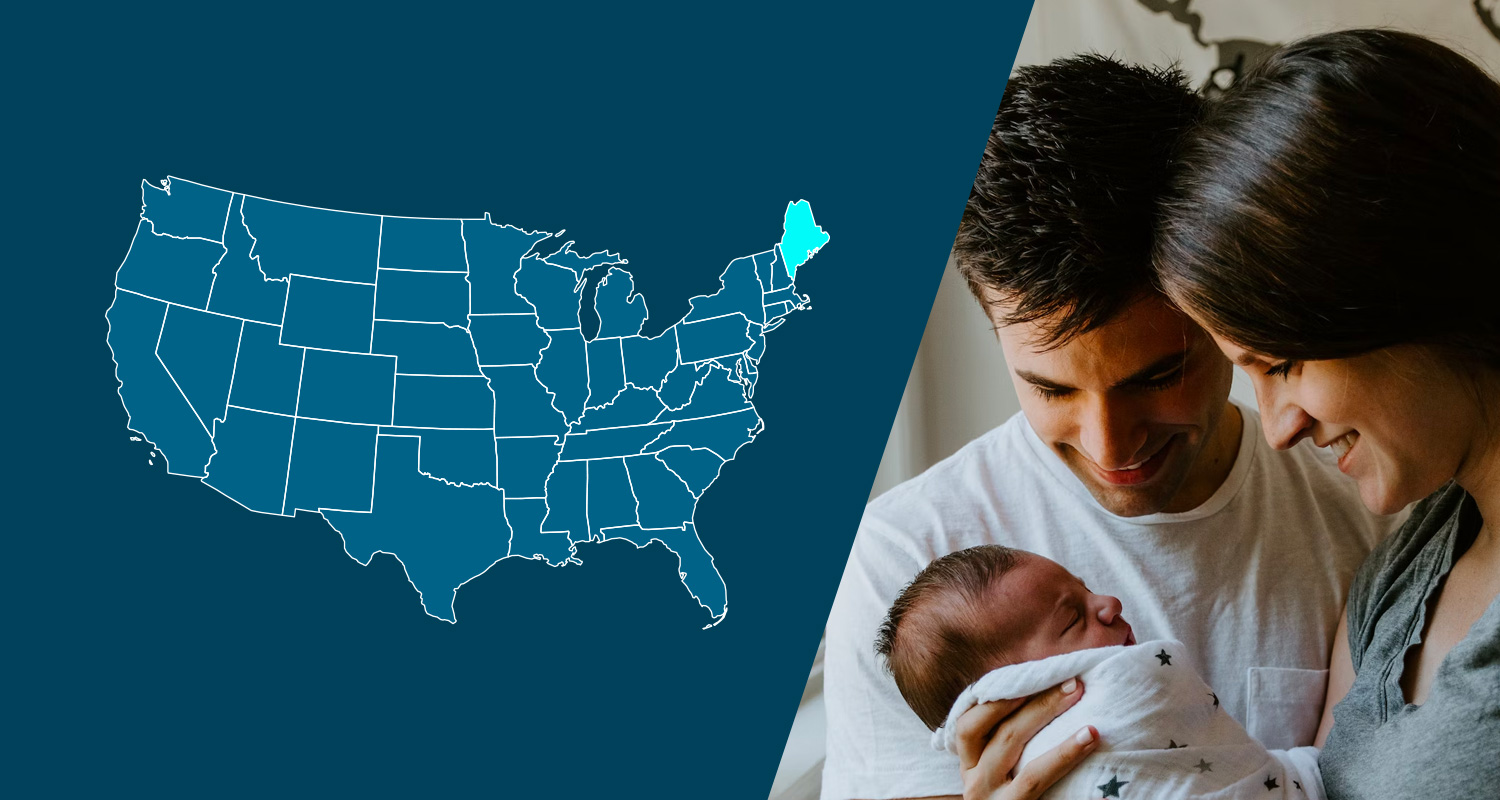On July 11, 2023, Maine Governor Janet Mills signed Legislative Document 1964 , An Act to Implement the Recommendations of the Commission to Develop a Paid Family and Medical Leave Benefits Program (the “Act”), into law. The program provides up to 12 weeks of paid medical leave and 12 weeks of paid family leave, with payroll contributions to begin January 1, 2025, and benefits available beginning in 2026 .
Which employers are subject to the program?
The leave program requirements apply to any business entity that has employees at a location in Maine.
Which employees are eligible for the program?
Employees that earn at least 6 times the state weekly average wage during their “base period” (defined as the four calendar quarters immediately preceding the day an application for leave is filed) that have a qualifying reason for family or medical leave are eligible for paid leave benefits.
What does the program cover?
Duration: The program covers up to 12 weeks of paid family leave and 12 weeks of paid medical leave, with a total of no more than 16 weeks of leave allowed in a 12-month period beginning on the first day an employee files for leave. Leave can be taken incrementally in periods of no less than 8 hours.
Purpose: An employee may take paid family leave to:
- bond with the covered individual’s child during the first 12 months after the child’s birth or the first 12 months after the placement of the child for adoption or foster care;
- care for a family member with a serious health condition;
- attend to a qualifying exigency (situations relating to a family member’s military service);
- care for a family member who is a covered service member (a member of the Armed Forces, National Guard or Reserves);
- take safe leave (any leave taken because the employee or their family member is a victim of violence, assault, sexual assault, stalking or any act that would support an order for protection); or
- any other reason permitted by the state’s existing unpaid family leave rules.
An employee may take paid medical leave if they have a serious health condition that makes them unable to perform the job functions for their position.
Leave Benefit: The program covers 90% of the employee’s average weekly wage (in the last four quarters prior to the commencement of leave , excluding bonus pay), capped at a maximum of 120% of the state average weekly wage.
Funding and Employer Responsibilities
An employer subject to the Maine Paid Family and Medical Leave (PFML) program must either pay into the insurance fund, beginning on January 1, 2025, or maintain private insurance covering family and medical leave for their employees. Self-employed individuals can opt -in to be covered under the fund for an initial period of no less than 3 years.
Contributions to the Fund: Required contributions will depend on employer size:
- Employers with 15 or more employees must contribute at least 50% of the premium, which will initially be set at 1% of employee wages. Employers can collect the remaining 50% of premiums through employee payroll deductions or choose to cover the employee portion.
- Employers with fewer than 15 employees are responsible for 50% of the premium through employee payroll deductions. No employer contribution is required; however, employers are responsible for collecting and remitting employees’ 50% share of the premium (initially 0.05% of employee wages).
Beginning in 2028, the premium rate will be adjusted annually. The rate adjustment will be based on the prior year’s fund expenditures, and must be released by October 1st (e.g., the 2029 premium rate will be announced by October 1, 2028).
Private Plan Exception: Employers can apply to the state administrator to be approved for private plan coverage in lieu of contributions to the insurance fund. To be approved, the private plan coverage, at a minimum:
- must provide the same amount of paid medical and family leave coverage for the reasons and duration required under the state program, without additional restrictions on leave;
- cover all employees for the entire duration of employment; and
- cannot impose employee premiums higher than what would be charged under the state-run program.
If the plan is self-insured, the employer must also post a surety bond in the amount specified by the administrator.
Non-compliant private plans may be subject to a penalty of $100 per violation. The Act does not specify what constitutes an individual violation.
Sequoia One PEO Clients Only: Please note that Sequoia One will assist clients with collecting and remitting required PFML contributions. As such, clients cannot opt out of the contributions by using a private plan or self-insurance exemption.
Notice Requirements: Employers must post a conspicuous notice provided by the state administrator explaining benefits available to employees under the program. The notice must be posted in English, Spanish, Portuguese, Somali, French, and any other language that is the primary language of at least 2,000 residents of the state or the primary language of at least 3 employees, if the administrator has a notice in that language.
Within 30 days of employment, employees must be provided with a written notice in their primary language explaining:
- the benefits available to them under the program;
- the employee’s contribution and obligations under the program;
- how to file a claim for benefits; and
- employer identification information, including the identification number issued by the administrator.
Employers may be liable for a $50-$150 per- employee penalty for failure to provide the required notices.
Employer Action
The state is expected to release additional rulemaking and guidance in the lead up to the 2025 launch of the PFML program.
In the meantime, employers with employees residing in Maine may want to:
- determine whether to sponsor a private plan and/or contribute to the state program (note that the private plan option is not available for Sequoia One PEO clients);
- develop a plan to comply with the notice requirements; and
- determine an internal policy on PFML leave, including but not limited to, how the leave will be coordinated with their current leave policy.
Additional Resources
The information and materials on this blog are provided for informational purposes only and are not intended to constitute legal or tax advice. Information provided in this blog may not reflect the most current legal develop-ments and may vary by jurisdiction. The content on this blog is for general informational purposes only and does not apply to any particular facts or circumstances. The use of this blog does not in any way establish an attorney-client relationship, nor should any such relationship be implied, and the contents do not constitute legal or tax advice. If you require legal or tax advice, please consult with a licensed attorney or tax professional in your juris-diction. The contributing authors expressly disclaim all liability to any persons or entities with respect to any ac-tion or inaction based on the contents of this blog. © 2023 Sequoia. All Rights Reserved.




